The Angelus: Our Newsletter
VOLUME 19, NUMBER 47
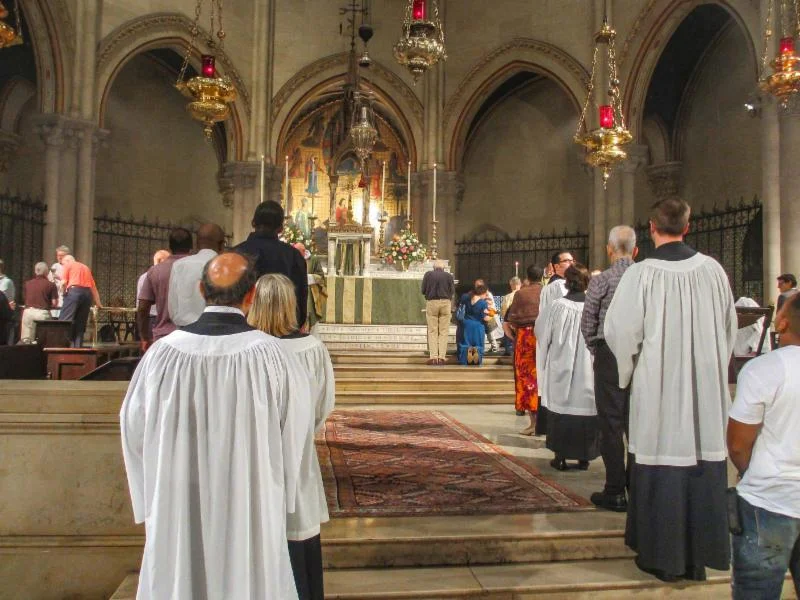
FROM THE RECTOR: GOD IN OUR LIVES TODAY
I'm writing on Friday, October 13, from Chicago where I am attending the Annual Conference of the Society of Catholic Priests of the Episcopal Church and the Anglican Church of Canada until Saturday. I want to tell you about two of the presentations we heard yesterday. (I'm saving the third presentation, by the Most Reverend Frank T. Griswold, on sacramental Reconciliation for when I am home and can access my books.
Read MoreVOLUME 19, NUMBER 46

FROM THE RECTOR: OCTOBER HOPES
It was in the fall of 1976, when I was in graduate school, that I first attended the Church of the Ascension in Chicago. Many readers of this newsletter may know of the crucifix on the outside wall of that church and the words there from the Lamentations of Jeremiah, "Is it nothing to you, all ye that pass" (Lamentations 1:12). It's a powerful, even jarring, proclamation of Christ's sacrifice. Between the main doors of Saint Mary's, the Virgin holds her child, a proclamation of another truth: the Incarnation of the Son of God. I hope the faith in Christ we share, especially with those victims of the shootings in Las Vegas, can help keep the shadows of despair from many hearts.
VOLUME 19, NUMBER 45
FROM THE RECTOR: ECHOES OF DEDICATION
Many members and friends of Saint Mary's remember Helena and George Handy. Helena died in 2001, George in 2012. George was head of the usher guild for many, many years. He was also the last member of the congregation who had grown up in and still lived in the neighborhood. Their ashes are reposed in the vault in the Lady Chapel. Although there was a white frontal on the altar for his funeral, I wore the black vestments that had been worn in 1928 for the burial of George's father when George was ten years old.
Read MoreVOLUME 19, NUMBER 44
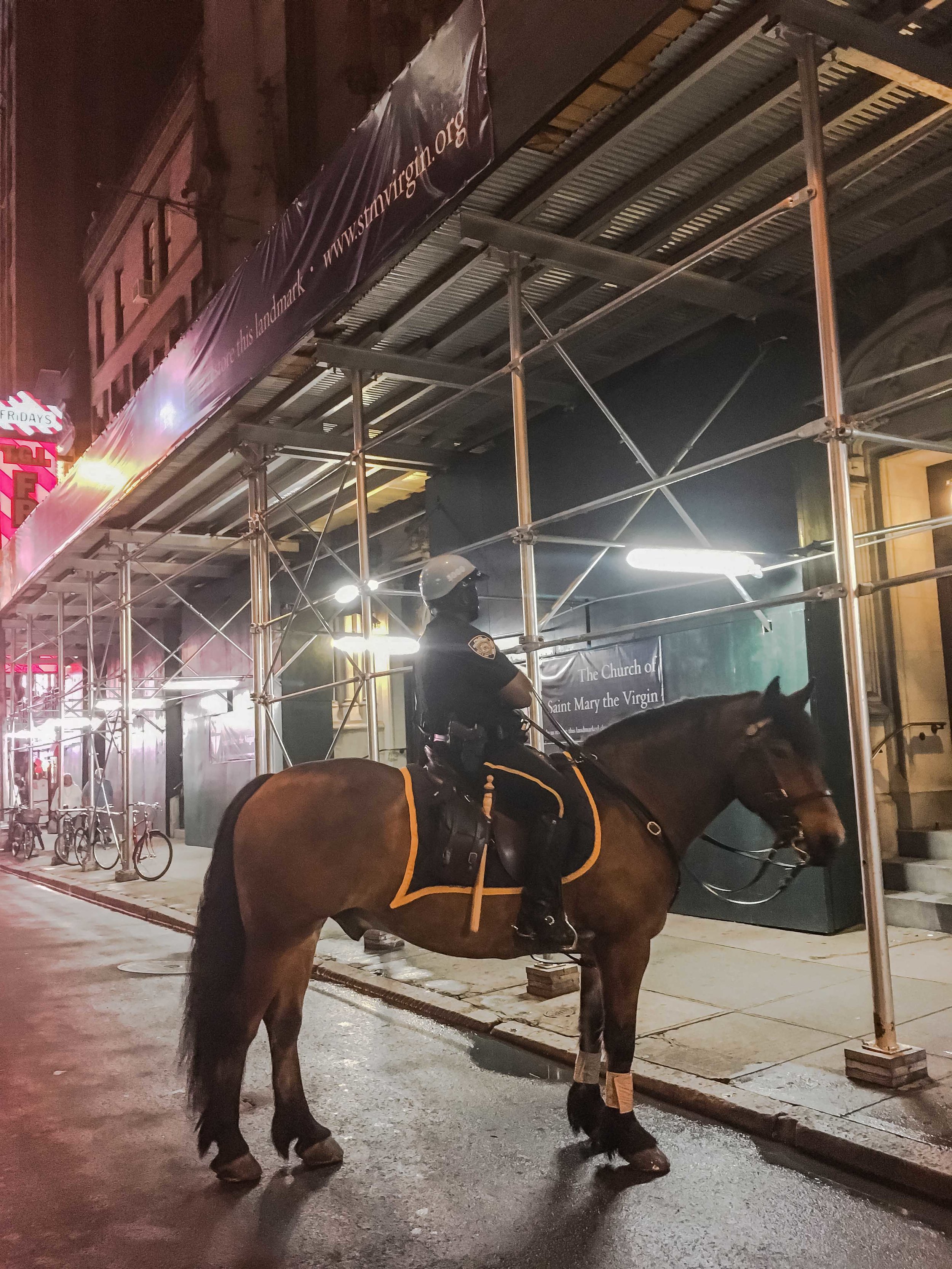
FROM THE RECTOR: A PARISH CALENDAR
In 1789, the Protestant Episcopal Church in the United States of America adopted its first Prayer Book. The statement of "Ratification" and the "Preface" of that first Prayer Book are still reprinted at the beginning of all of our American books. If you don't know the Preface, I think you will like reading it. It's helped to shape the thinking of our American church since its organization after the American Revolution. Here's one of its most important paragraphs:
Read MoreVOLUME 19, NUMBER 43

FROM THE RECTOR: REVISING THE PRAYER BOOK
The Anglican Theological Review (Summer 2017) has published an important article, "Revising the Episcopal Church's Book of Common Prayer (1979): Liturgical Theologians in Dialogue," by Scott MacDougall, Ruth Meyers, and Louis Weil. This article is available online to non-subscribers here. Scott MacDougall is an assistant professor of theology at the Church Divinity School of the Pacific. Ruth Meyers is Hodges-Haynes Professor of Liturgics there, and Louis Weil, now retired, is professor emeritus in the chair now held by the Reverend Dr. Meyers. The article is very much worth reading for what it says and doesn't say.
Read MoreVOLUME 19, NUMBER 42
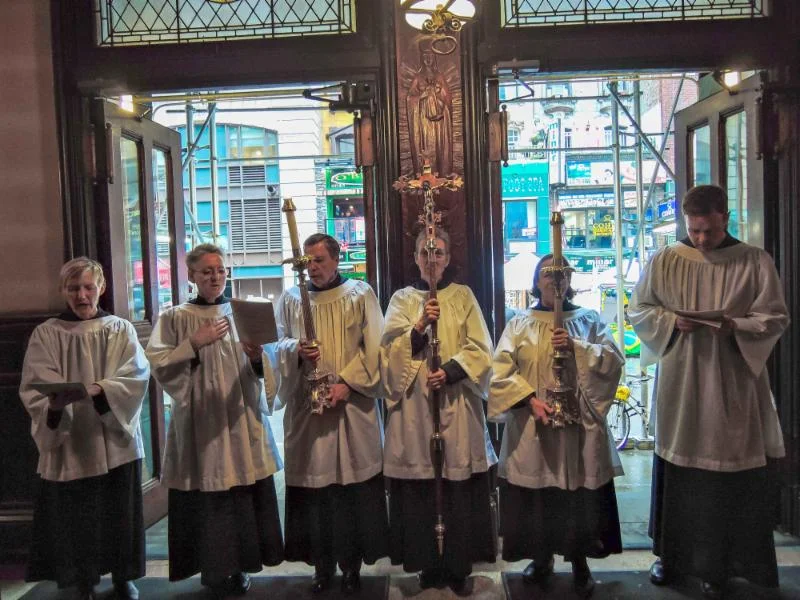
FROM FATHER SMITH: HOLY CROSS DAY
In Scripture we read, "We preach Christ crucified, a stumbling block to Jews and folly to Gentiles, but to those who are called, both Jews and Greeks, Christ the power of God and the wisdom of God" (1 Corinthians 1:23-24). In the Nicene Creed, we proclaim, "For our sake [our Lord Jesus Christ] was crucified under Pontius Pilate; he suffered death and was buried. On the third day he rose again in accordance with the Scriptures." During the Eucharistic Prayer, we chant, "Christ has died. Christ is risen. Christ will come again." This is the Paschal mystery, the heart of the Christian faith.
Read MoreVOLUME 19, NUMBER 41

Five hundred years ago, on October 31, 1517, Martin Luther, then an Augustinian monk and a lecturer at Wittenberg University, published his Ninety-five Theses. Luther's manifesto was a protest against papal indulgences and other elements of the late-medieval Church's teaching on repentance, sacramental Confession, and Purgatory. Luther sent his theses to the ecclesiastical authorities, though it has long been claimed that he nailed them to the door of Wittenberg's castle church. Luther's originally local protest soon spread to other parts of Germany and beyond. Thus was born the Protestant Reformation.
Read MoreVOLUME 19, NUMBER 40

FROM THE RECTOR: FOR TIMES SQUARE
At Masses celebrated without a service bulletin, after processing to the altar and genuflecting to acknowledge the presence of the Sacrament, I turn and say, "Welcome to Saint Mary's, the Episcopal parish in Times Square"--or "by Times Square." After all these years I found myself using a different preposition last week, "for Times Square." I continue with these words, "The Holy Eucharist is celebrated using the order found beginning on page 355 of the red Prayer Book," and I repeat that last phrase, which can be helpful to our many visitors. When those present and participating have sorted out the red Prayer Book from the blue Hymnal, I bow to the congregation, turn and go up to the footpace (the step on which the altar rests), kiss the altar, turn to the congregation, and begin the service.
VOLUME 19, NUMBER 39

FROM THE RECTOR: SUMMER PASTORAL PROJECT
Last summer, after the death of her roommate (and third cousin!) Alice Manning, I asked Linda Bridges for contact information. By the end of August, Linda herself was seriously ill. Many will remember that she died on March 25, 2017, and was buried, in the church in which she was baptized, on Monday in Holy Week, April 20, 2017. It made all the difference in the world that I had pestered her for contact information in case she took ill and could not tell us whom to call. Very aware that many of our most committed and regular members and friends are, like Father Smith and me, getting older, we resolved that during the summer of 2017, we would offer to collect contact information for the local congregation.
Read MoreVOLUME 19, NUMBER 38

FROM THE MUSIC DIRECTOR: AAM CONFERENCE IN THE UK
The Association of Anglican Musicians (AAM) was born out of a gathering of three prominent American cathedral musicians in 1965 who founded the American Cathedral Organists and Choirmasters Association (ACOCA), modeled on the existing Association of English Cathedral Organists. Annual meetings followed. By 1973 it had become apparent that an American association of Anglican musicians, not limited to musicians serving in cathedrals, was desirable. The new name (AAM) was officially adopted the following year. Signaling a broadening of focus to include the larger Anglican Communion, the AAM Annual Conference in 1978 was hosted at the headquarters of the Royal School of Church Music, Addington Palace, Croydon, England.
Read MoreVOLUME 19, NUMBER 37
FROM THE RECTOR: LOSING MATTHEW'S VOICE
For the last three Sundays the appointed gospel lessons have been from the thirteenth chapter of Matthew. Roman Catholics on these Sundays, if their pastor so chose, had the opportunity to hear almost all of this chapter and in the order in which Matthew wrote it. We Episcopalians did not-the gospel lessons for the 2006 Lectionary are the same as the lessons for these Sundays in the 1979 Lectionary.
Read MoreVOLUME 19, NUMBER 36

FROM THE RECTOR: DINAH AND OTHER STORIES
In the lectionary for weekday Eucharists, selections from Genesis were read this year early in Epiphany Season and were picked up and continued in the sixth week after Pentecost. Although there are other options for weekday Eucharists, we use this lectionary because it's essentially the only one available to us. It is really the Roman Catholic Church's daily Mass lectionary. Their theological agenda shows up in the selections a little too often for me, but that is a subject for another time.
Read MoreVOLUME 19, NUMBER 35

FROM THE RECTOR: OPENINGS
One famous opening line is from a novel by L. P. Hartley (1895-1972): "The past is a foreign country: they do things differently there" (The Go-Between [1953]). It's a great line, but not entirely true. I think William Faulkner is closer to the truth in his novel Requiem for a Nun (1951) when the defense lawyer remarks, "The past is never dead. It's not even past." Right now I'm reading Anne Somerset's book Elizabeth I (1991, iPhone edition). Mary Stuart, queen of Scotland, has lost her life, but the Spanish Armada has not set sail. Faulkner's words are apt.
Read MoreVOLUME 19, NUMBER 34

FROM THE RECTOR: RITUAL STUDIES
A footnote reference led me to a book edited by Paul Bradshaw and John Melloh, Foundations in Ritual Studies: A Reader for Students of Christian Worship (2007). I've glanced briefly at all of the articles-and all but two of them made me feel as if I were back in the graduate school grind I knew for a few years before seminary. That said, I'm going to try to read all of the essays because of the editors' selection of the first two, "An Open Letter" by Romano Guardini (1885-1968), and "Ritual" by Mark Searle (1941-1992), who taught at Notre Dame and gave a lecture on "Guardini and the Liturgical Act" to a course for the Catechesis of the Good Shepherd at Notre Dame that I didn't hear in person, but which I have on a cassette. He was a remarkable scholar.
Read MoreVOLUME 19, NUMBER 33

FROM DAVID HURD: TWO CONFERENCES
The months of June and July are always filled with conferences and conventions of variousorganizations of organists and church musicians. I was privileged to be invited to serve on the faculty of the 2017 Worship and Music Conference that took place during the weeks of 18 June and 25 June. These conferences, sponsored by the Presbyterian Association of Musicians (PAM), have been an annual feature at the picturesque Montreat Conference Center near Ashville, North Carolina, for several decades.
Read MoreVOLUME 19, NUMBER 32

FROM THE RECTOR: HIS ABSENCE AND OUR JOURNEY
A footnote (and the wonders of the Internet) led me to read an article that I don't think I had seen before, "The Real Absence: A Note on the Eucharist" by Canon Donald Gray, a retired and distinguished senior priest of the Church of England (Worship 44 [January 1970, 20-26]). Concerning Christ's eucharistic presence he writes, "The real presence is accompanied by a real absence which summons the people of God into the future and to definitive presence in the ultimate future" (page 26). Gray suggests that our worship is more shaped by our faith in the final destiny of individuals and of humankind than by our past.
Read MoreVOLUME 19, NUMBER 31
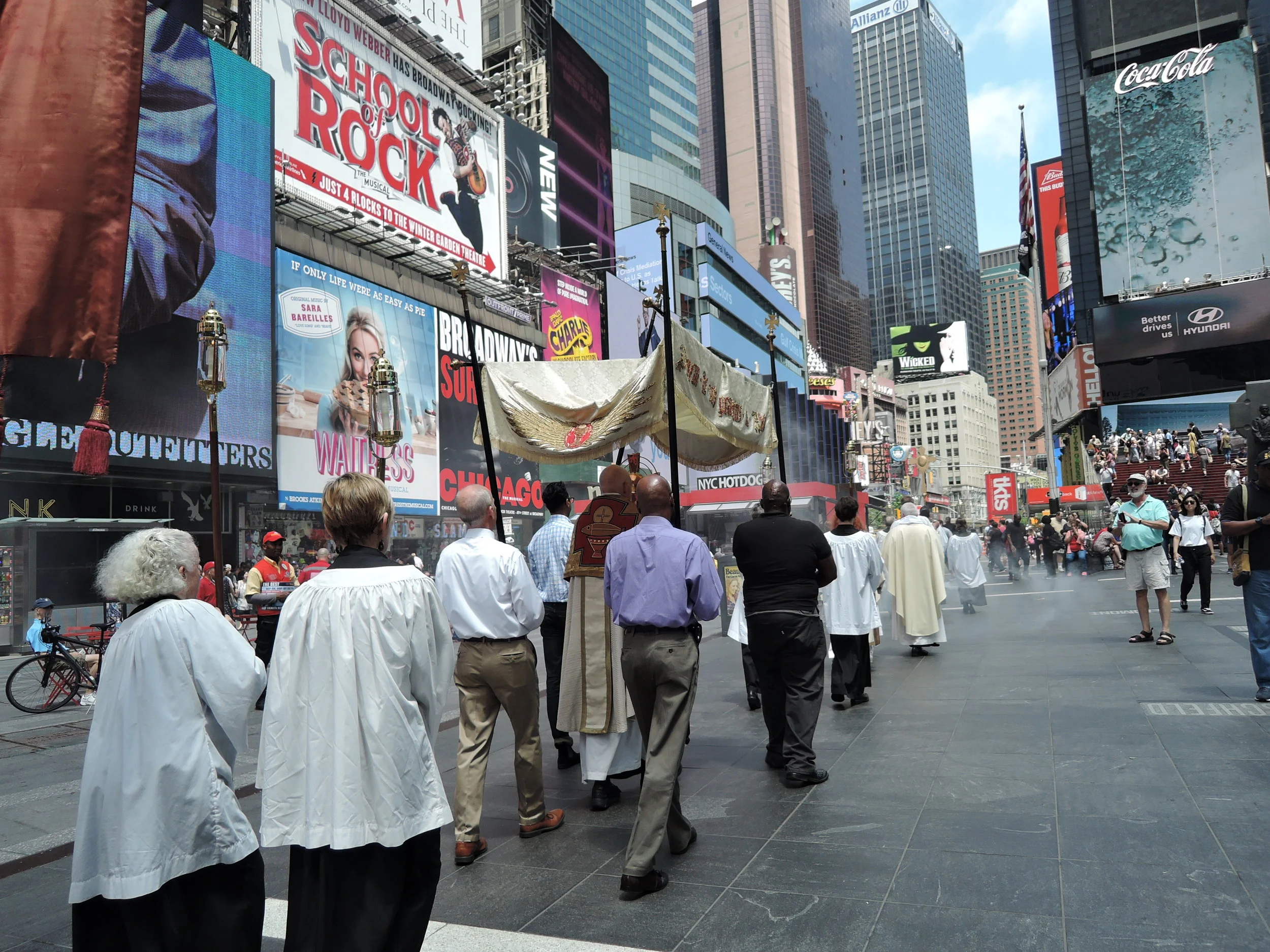
FROM THE RECTOR: TWO APOSTLES
This year the Feast of Saint Peter and Saint Paul, Apostles, falls on Thursday, June 29. Evening Prayer on the Eve, Wednesday, June 28, will be for this feast. On Thursday, in addition to Morning Prayer and the regular noonday services, Noonday Office and Mass, there will be a Sung Mass at 6:00 PM in place of Evening Prayer. "In by six and out before seven" is my own slogan, as it were, for our "Evening Sung Masses." There's singing and incense, but not everything is sung that would be sung at Solemn Mass.
Read MoreVOLUME 19, NUMBER 30
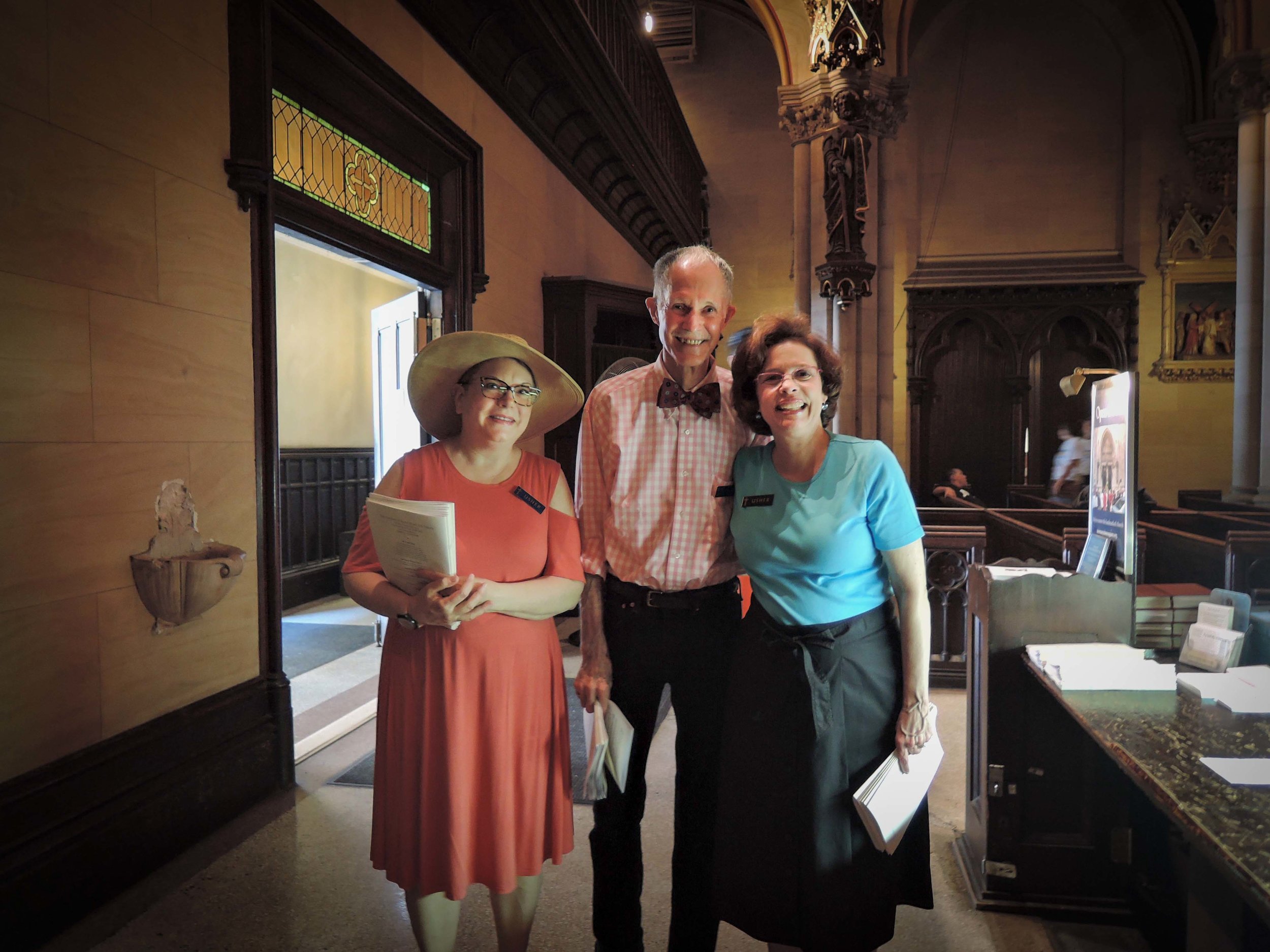
FROM THE RECTOR: EATING AND SEEING
When I first started attending the Episcopal Church during my college years, my soul was captured by the beauty of the Prayer Book and with the reverence with which the words were prayed. Having been brought up Southern Baptist, I found that the prayers of the book and the place of the Eucharist in the life of the Episcopal Church offered a broader spirituality than I had known. When I think back about the journey of my adult Christian life, the Sunday Eucharist is at its heart. I think that would be true even if I were not a priest.
VOLUME 19, NUMBER 29

FROM THE RECTOR: GESTURES
At Canon Carl Gerdau's funeral at Saint Luke's Lutheran Church, I was celebrant at a free-standing altar, facing not a tabernacle as at Saint Mary's, but instead the congregation for the Great Thanksgiving. I think I probably read from the altar book more than I usually need to do-to keep my mind from being distracted. One thing I hadn't thought through was where to place the flagon of wine so that the bread, the cup, and the flagon could all be seen-I fiddled a little with it.
Read MoreVOLUME 19, NUMBER 28

From The Rector: Carlson Gerdau, Priest, 1933-2017
The Reverend Canon Carlson Gerdau died on Saturday, May 27. His funeral was held on Wednesday, May 31, at Saint Luke's Lutheran Church, 308 West Forty-sixth Street, the congregation in which Carl was baptized. It is worth noting that, in 2001, after thirty years of theological dialogue, the Episcopal Church and the Evangelical Lutheran Church in America entered into "full communion." The generous hospitality of Saint Luke's senior pastor, the Reverend Dr. Paul Schmiege, made it possible for Carl to be buried by the Episcopal Church at Saint Luke's.
Read More